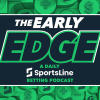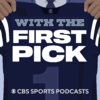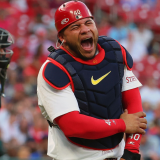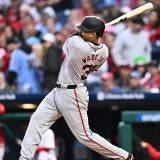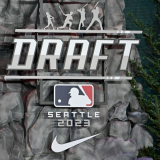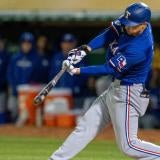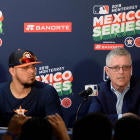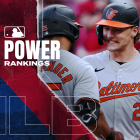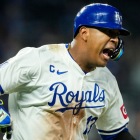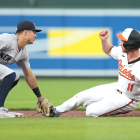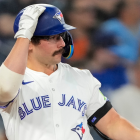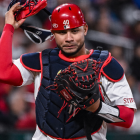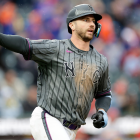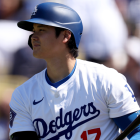We here at CBS Sports enjoy reading books about all topics, but especially baseball. Fortunately, the new season means a wave of interesting releases -- including Ben Lindbergh and Travis Sawchik's The MVP Machine, which is due out June 4. Unlike with most baseball books, wherein the content revolves around strategy and/or analytics, Lindbergh and Sawchik focused almost exclusively on the modern tools and tricks of player development.
Below you'll find our Q&A with Lindbergh. But before skipping ahead, you can check out more about The MVP Machine by clicking here. You can also find information on Lindbergh's (The Only Rule Is It Has To Work) and Sawchik's (Big Data Baseball) first books by clicking on those titles, and you can follow them on Twitter by clicking here and/or here.
Did the experience of writing your last book -- where you moonlighted as a front-office type for an independent league team -- help you write this one, about player development?
Definitely. Sam Miller and I wanted to make player development a bigger part of The Only Rule Is It Has to Work, but running a team turned out to be so overwhelming that it was all we could do to try to find players who could contribute immediately. Our roles with the Sonoma Stompers didn't leave us with a lot of time or resources with which to improve players, but I knew that was a subject I wanted to explore at greater length later, and I'm glad I got to.
The Stompers experience also exposed the difficulty of communication between people with different baseball backgrounds. Sam and I had trouble getting our manager and some of our players on board with what we wanted to do, in part because we lacked the credibility that comes from spending time in uniform. MLB teams have experienced the same problem, and as The MVP Machine explains, they've found a solution in what we call "conduits": recently retired players with an affinity for analytics who can comfortably move between both worlds, speaking fluent front office but also fitting in on the field.
Finally, working with a co-author on The Only Rule helped prepare me to tackle that process again with The MVP Machine. Melding the work of two people into one coherent, consistent narrative is a challenging endeavor, but I think both books came out better (and sooner) as team-ups than they could have as solo projects. And beyond the benefits of richer reporting and shorter turnaround times, it's helpful to have someone with whom to commiserate when deadlines are looming.
Much of the book concerns outsiders -- or, at least, folks who impacted the game independent of team employment before later joining a club. Was that by design?
We went where our reporting took us, and often the thread led outside of affiliated ball, in the independent facilities where much of the initial innovation that led to today's player-development revolution occurred. We think that's another thing that sets The MVP Machine from most of the books in the Moneyball mold, including The Only Rule and Big Data Baseball: Those are largely top-down stories about front offices exerting their influence, whereas ours is a bottom-up story about organized baseball learning from and incorporating the insights of coaches and players who saw something most of the sport missed.
You report that Astros general manager Jeff Luhnow had to be talked out of drafting Luke Heimlich, and that he later forced through the Roberto Osuna trade despite objections from the rest of his front office -- are the Astros in trouble from a management perspective?
Luhnow's no-holds-barred team-building tactics have caused controversy outside of the Astros ever since the organization embarked on its extreme rebuild. Our reporting indicated that at times they've proved divisive internally too.

Luhnow and his lieutenants deserve an enormous amount of credit for building a baseball juggernaut and pushing player development forward, but the willingness to endure criticism that enabled them to short-term-tank their way to three consecutive no. 1 draft picks, embrace much-maligned tactics like defensive shifting, and integrate technology into player development has also contributed to decisions like laying off virtually all of their pro scouts and acquiring Osuna while he was still serving a domestic-violence suspension. As is the case with a few of the trailblazers whose pioneering approaches to player development are documented in the book, the results can't be questioned, but some of the methods can.
One of the most interesting stories you relay is how Brian Bannister, Boston's pitch analytics guru, had two of his pitchers swap breaking balls during the season. Can you expand upon what Bannister saw that made him offer that instruction?

Over the course of the 2018 regular season, Red Sox relievers Joe Kelly and Heath Hembree gradually lost the feel for their once-devastating sliders, and they stopped getting as many whiffs with that pitch. Boston's high-speed cameras and ball-tracking devices revealed that the two pitchers' hand positions had reoriented in a way that diminished their sliders but benefited their curves, so rather than have them stick with their sliders out of habit, Red Sox pitching coach Dana LeVangie, supported by Bannister, advised them to rely on their curves in the playoffs. Both Kelly and Hembree were highly effective in October, turning a Boston bullpen that was supposed to be a weakness into a World Series-winning strength. Neither pitcher threw a single slider in October, and that repertoire change was entirely attributable to the technology that allowed Boston's brain trust to make that call with confidence.
There's talk in the book about how these new methods have led to more competitive advantages for the teams who are at the forefront. Is it fair to also presume that the gap between the private and public sector has grown?
It is. So much of the player-development process takes place far from fans' and outside analysts' view. And if, as we argue, player development is becoming a bigger source of separation between teams, then that means more of the separation between teams is opaque to the public. Travis and I have hopefully lifted that veil a little, but the knowledge gap is growing. As technology becomes capable of measuring more aspects of player performance, teams will be able to alter athletes' trajectories in increasingly significant ways. Public projection systems, which are based largely on past performance, won't see those changes coming.
On a similar note, are you concerned that as this technology trickles down -- to the college and prep ranks and beyond -- baseball's inequality problems will become more extreme?
Yes, at least in the short term, before the technology becomes more affordable. It's already prohibitively expensive for some families to send their kids to showcases and sign them up for travel teams. Now that a ton of tech-driven development is occurring in amateur ball, it's going to get tougher for kids to keep up without access to swing sensors, tracking technologies, and capable coaches who can make use of those tools. This is an area where MLB should invest to make sure fewer potential players get left behind.
A fair amount of the book grapples with the idea of whether talent is innate or learnable. Where did you fall on the spectrum entering the process, and where are you now?
I used to believe that most major-league players had already maxed out their abilities (aside from modest improvements in plate discipline and strength as they aged into their physical primes). MLB is incredibly competitive, and it seemed only logical that to reach the pinnacle of the profession and beat out thousands of other aspiring stars, a player would have to have harnessed every iota of talent he had.
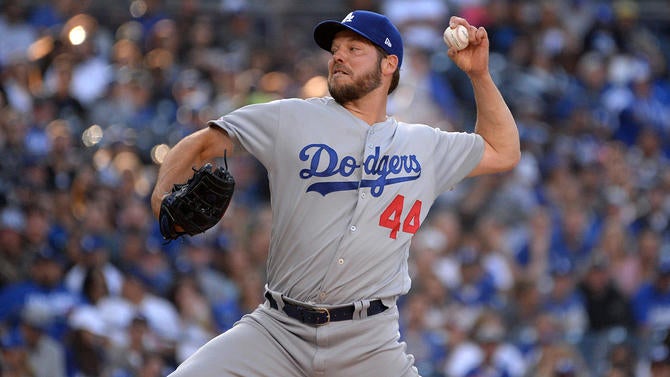
Then Rich Hill happened — and before him, Justin Turner, J.D. Martinez, and other eye-catching reinventions. Those players opened my eyes to the idea that even experts who are already among the best in the world at what they do might have latent talent to unlock and a more elite level of performance waiting within them. That realization was what made me want to work on the book. It seemed like a landmark shift in thinking that not only reflected a movement transforming the sport but also seemed inspirational in a way that would resonate beyond baseball.
Working on the book and trying out some of the techniques and technological tools that players have only recently started to utilize only deepened my understanding. Of course, some players and people are still more gifted than others and not every skill can be acquired , but what we think of as innate talent is often more malleable than was long believed.
What was the biggest thing you learned from doing this book?
Don't try to report and write a book on an accelerated schedule without taking time off from your day job. It's a bad idea.
On a less personal note, I gained a greater understanding of how smart, open-minded, and motivated many players are. It's true that players had a lot to learn from people who never played the game, but that teaching process works the other way, too.



